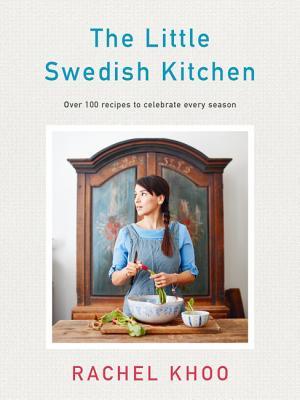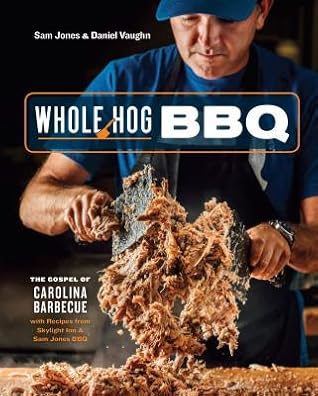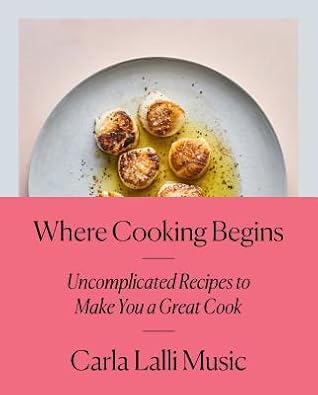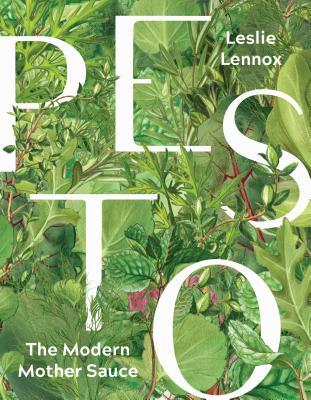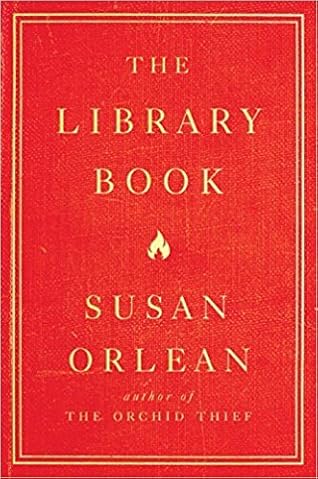The Library Book by Susan Orlean
Susan Orlean grew up going to the library regularly with her mother - special trips that bonded them and their love of reading. As Susan got older she quit using the library and started buying books instead. When her son wanted to interview a librarian for a school project they went to their local branch in Studio City, CA and that visit reignited Orlean's spark of love for libraries. When she found out that the Central branch of the Los Angeles had burned in 1986 and arson was suspected she dove into the story. In this book Orlean explores the Central library fire and suspected arsonist, but also explores the role of libraries in general and more specifically the history and current staff at the LA Central library.
I had heard such good things about this book and I'm a public librarian so I was very excited to read this one. But, I was disappointed overall. The story of the Central library fire is a very small part of the overall book and it's never resolved either. Orlean is all over the place with the book and it's hard to follow all the storylines and people she includes. She goes back in forth in time and gives a LOT of detail about people or things that don't seem important to the overall story. Since I already work in a public library I'm not surprised by most of the information she gives about the role of libraries. I think this could have been an amazing book and the descriptions of the fire and what was lost in the first few chapters is really interesting. I also think it was really interesting how people volunteered to help the library and the fund-raising efforts to help rebuild the collection. But, it just got really bogged down in too much detail about too many people and events. I will say the chapter on how often arson is wrongfully determined was eye-opening. I hate to say it, but I would not recommend this one.
There was a lot of interesting information about libraries, so there were some quotes I liked:
"With Lundquist directing, the volunteers worked for the next three days around the clock. Most were strangers to each other, drawn together unexpectedly, and worked together for hours, diligently and peacefully. They formed a human chain, passing the books hand over hand from one person to the next, through the smoky building and out the door. It was as if, in this urgent moment, the people of Los Angeles formed a living library. They created, for that short time, a system to protect and pass along shared knowledge, to save what we know for each other, which is what libraries do every day." (p. 37)
"The library is an easy place to be when you have no place you need to go and a desire to be invisible." (p. 60)
"Szabo [the current LA city librarian] acknowledges the fact that the library has attained a sort of guardianship of many of Los Angeles's street people. When he ran the library system in Atlanta, he sent bookmobiles to the motels where many homeless people lived, to offer books and story hours for the children. He included a public health nurse on the bookmobile so the nurse could check on residents' well-being once the bookmobile had drawn them out." (p. 73)
"In 2014, Szabo had established Career Online High School - COHS - which is the first accredited library-based high school program in the United States. Through the library's website, adults who had not gotten their high school diploma could take any of the nine hundred COHS online classes for free, and graduate with a diploma rather than a high school equivalency certificate. Szabo frequently preaches the gospel of the library as the people's university, and with COHS, he had managed to make good on that notion." (p. 77)
"[Glen Creason a senior librarian] also waited on a patron named Richard Ramirez, who was looking for books on torture and astrology. (It turned out that Ramirez was the serial killer known as the Night Stalker and was sentenced to death for thirteen murders in Los Angeles. 'He was definitely really creepy,' Creason says.)" (p. 159)
"In the year leading up to Prohibition, when the ban on alcohol seemed inevitable, every book about how to make liquor at home was checked out, and most were never returned." (p. 175)
[In the 1930's when a telephone reference dept. was added] "So many people called for help solving crossword puzzles that Warren finally forbade the librarians to answer those requests, because they hardly had time to answer non-crossword questions." (p. 200)
"OverDrive [and ebooks] may be the future of book lending, but that's not the same thing as the future of libraries. Libraries are physical spaces belonging to a community where we gather to share information. There isn't anywhere else that fits that description." (p. 299)

Inspired: slaying giants, walking on water, and love the Bible again by Rachel Held Evans
Some people view the Bible as a literal instruction manual, while others view it as a metaphor or collections of stories no different than fairy tales. Christians say the Bible is Inspired, but what does that mean? Rachel Held Evans started exploring how the Bible is meant to be read and used today and her findings are in this book. Each chapter starts with a re-imagining of a popular Bible story, then goes on to explore a type of literature or story found in the Bible and how it was used then and what it could mean for us today. She doesn't shy away from hard issues or stories, but also doesn't make the Bible out to be more or less than what it is. Beautifully written and expertly researched this book does NOT disappoint. Evans was an amazing writer and the worst part about finishing this book is knowing it's her last one and I don't get to anticipate her next book and the one after that.
There are a LOT of quotes I really liked:
"At the heart of the gospel message is the story of a God who stoops to the point of death on a cross. Dignified or not, believable or not, ours is a God perpetually on bended knee, doing everything it takes to convince stubborn and petulant children that they are seen and loved. It is no more beneath God to speak to us using poetry, proverb, letters, and legend than it is for a mother to read storybooks to her daughter at bedtime. This is who God is. This is what God does." (p. 12)
"If I've learned anything from thirty-five years of doubt and belief, it's that faith is not passive intellectual assent to a set of propositions. It's a rough-and-tumble, no-holds-barred, all-night-long struggle, and sometimes you have to demand your blessing rather than wait around for it." (p. 28)
"They say art should afflict the comfortable and comfort the afflicted. I think the same is true for Scripture. For centuries the Bible's stories of deliverance have offered comfort to the suffering and a challenge to the privileged." (p. 43)
"So when we join with our spiritual ancestors in telling our stories of deliverance, we must remember to name each wilderness, to mark those spots where, when all hope seemed lost, we encountered God - at a desert well on the road to Egypt; on a bridge in Selma, Alabama; at a shabby airport chapel in Chicago; in a labor and delivery room on Candlemas Day. God made a way where there seems to be no way. It's the steady refrain of our narrative heritage." (p. 50)
"While it is shortsighted to discount Scripture's laws as totally backward and amoral, it is just as misguided to pretend they reflect a more just society than they do. No one who values the inherant worth and dignity of their fellow human beings should want a return to ancient Israel. Those were not the 'good old days.' Not by a long shot." (p. 54)
"If you want to do violence in this world, you will always find the weapons. If you want to heal, you will always find the balm. With Scripture, we've been entrusted with some of the most powerful stories ever told. How we harness that power, whether for good or evil, oppression or liberation, changes everything." (p. 57)
"But this is the deleterious snare of fundamentalism: It claims that the heart is so corrupted by sin, it simply cannot be trusted to sort right from wrong, good from evil, divine from depraved. Instinct, intuition, conscience, critical thinking - these impulses must be set aside whenever they appear to contradict the biblical text, because the good Christian never questions the 'clear teachings of Scripture;' the good Christian listens to God, not her gut. I've watched people get so entangled in this snare they contort into shapes unrecognizable. When you can't trust your own God-given conscience to tell you what's right, or your own God-given mind to tell you what's true, you lose the capacity to engage the world in any meaningful, authentic way, and you become an easy target for authoritarian movements eager to exploit that vacuity for their gain." (p. 66)
"The Bible isn't some Magic 8 Ball you can consult when deciding whether to take a job or break up with a guy, not is it a position paper elucidating God's opinion on various social, theological, and political issues. While we may wish for a clear, perspicuous text, that's not what God gave us. Instead, God gave us a cacophony of voices and perspectives, all in conversation with one another, representing the breadth and depth of the human experience in all its complexities and contradictions." (p. 103)
"When God gave us the Bible, God did not give us an internally consistent book of answers. God gave us an inspired library of diverse writings, rooted in a variety of contexts, that have stood the test of time, precisely because, together, they avoid simplistic solutions to complex problems. It's almost as if God trusts us to approach them with wisdom, to use discernment as we read and interpret, and to remain open to other points of view. 'The iconic idea of the Bible as a book of black-and-white answers,' wrote Beal, 'encourages us to remain in a state of spiritual immaturity...In turning readers away from the struggle, from wrestling with the rich complexity of biblical literature and its history, in which there are no easy answers, it perpetuates an adolescent faith. It keeps us out of the deep end, where we have to 'ride these monsters down,' as Annie Dillard put it, trusting that it's not about the end product, but the process." (p. 104)
"Often I hear from readers who left their churches because they had no songs for them to sing after the miscarriage, the shooting, the earthquake, the divorce, the diagnosis, the attack, the bankruptcy. That American tendency toward triumphalism, of optimism rooted in success, money, and privilege, will infect and sap of substance any faith community that has lost its capacity for 'holding space' for those in grief. As therapists and caregivers explain, to 'hold space' for someone is to simply sit with them in their pain, without judgment or solutions, and remain present and attentive no matter the outcome. The Psalms are, in a sense, God's way of holding space for us. They invite us to rejoice, wrestle, cry, complain, offer thanks, and shout obscenities before our Maker without self-consciousness and without fear. Life is full of the sort of joys and sorrows that don't resolve neatly in a major key. God knows that. The Bible knows that. Why don't we?" (p. 110-11)
"The fact is, despite wistful nostalgia for the days when America was a supposedly 'Christian nation,' the history of this country is littered with the bodies of innocent men, women, and children who were neglected, enslaved, dispossessed, and slaughtered so the privileged class could have more and more and more and more." (p. 126)
"'Jesus came to die,' they often say, referring to a view of Christianity that reduces the gospel to a transaction, whereby God needed a spotless sacrifice to atone for the world's sins and thus sacrificed Jesus on the cross so believers could go to heaven. In this view, Jesus basically shows up to post our bail. His life and teachings make for an interesting backstory but prove largely irrelevant to the work of salvation...Jesus didn't just 'come to die.' Jesus came to live - to teach, to heal, to tell stories, to protest, to turn over tables, to touch people who weren't supposed to be touched and to eat with people who weren't supposed to be eaten with, to break bread, to pour wine, to wash feet, to face temptation, to tick off the authorities, to fulfill Scripture, to forgive, to announce the start of a brand-new kingdom, to show us what the kingdom is like, to show us what God is like, to love his enemies to the point of death at their hands, and to beat death by rising from the grave. Jesus did not simply die to save us from our sins; Jesus lived to save us from our sins. His life and teachings show us the way to liberation. But you can't fit that on a bumper sticker." (p. 154-55)
"The apostles remembered what many modern Christians tend to forget - that what makes the gospel offensive isn't who it keeps out but who it lets in." (p. 186)
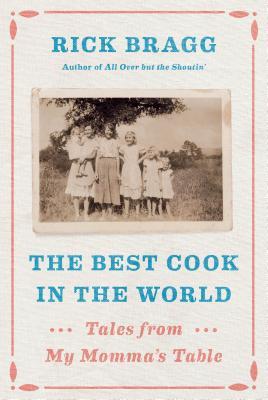
The Best Cook in the World: tales from my momma's table by Rick Bragg
This book is Rick Bragg's ode to Southern food and his mother Margaret, also known as The Best Cook in the World. Cooking skills go back generations in the Bragg family. As his great-grandfather Jimmy explained it to Bragg's grandmother Ava, when you're poor and working hard, manual labor jobs you want not just food for sustenance, but food you actually look forward to eating when you get home - it might be the only spot of good in your whole day. Jimmy and other Bragg family members managed to make mouth-watering feasts out of scraps - they had to as they could afford little beyond what they could raise, grow, forage or hunt. Bragg sits down with his Mom as she's getting older to try to get recipes for the food she grew up eating and making and also the family stories that go along with all the recipes. Of course Margaret and all the people she learned from never used printed recipes - some could not read or write. Bragg does an amazing job of telling his family's story through food and food was important for them and I think for everyone. You always remember the food you grew up eating. You will find yourself fascinated by Bragg's crazy family lineage and craving the food he describes even if you didn't grow up eating that way. Thankfully there are several recipes in each chapter so you can try to carry on the tradition of cooking great food for your own family.
Some quotes I liked:
"It is the one place in our culture where living in the past makes a lovely sense, not an antidote for all the rest of it, but a balm. There is a reason why many black Southerners - and some white ones, like my mother - still call this kind of cooking soul food, because it transcends the pain and struggle of the everyday, a richness for a people without riches." (p. 13)
"She believes that most outsiders, including Southerners who have never stood in a field and salted a tomato, have forgotten what Southern country food used to be, or ought to be. 'I mean, it ain't s'posed to be easy.'" (p. 19)
"The secret to a good biscuit, he believed, was a soft, domed top but a thin, crispy bottom. You got this with a little extra lard on the biscuit pan's bottom - not a whole lot, just a little more - so that the flour on the bottom crisped as the rest of the biscuit baked. Some people did not like it and preferred a soft, fluffy biscuit through and through, which concerned him not at all. Those people could make their own damn biscuit, if they did not see the glory in his." (p. 57)
"Thick grits are good, even if they seem a little too thick, she said, parroting her own mother, who was parroting Jim. Watery, thin grits are always an abomination, a thing not even food. Some chefs try to mask this by serving grits in a bowl, as if they meant them to be a watery mess. Grits should not be served in a bowl, like, ugh, cream of wheat, but should be thick enough to hold up in a pool or puddle on the plate. They should not need butter, salt, or pepper after the fact, but some people like saltier grits and more buttery ones. Some people go crazy and put diced ham or bacon in them. These people are Philistines. The cayenne will give them a little heat, but not so much as to be silly." (p. 66)
"[Ava] was a true Pentecostal...She wore her hair to below her waist then, and her skirts to her shoe tops. Around a cookfire, the girl was a human torch. At the woodpile, she was little more than a backstop. 'It's be easier on your shins if you was to put on some pants,' he said. 'Be easier to get out the way, when the wood come flyin' at you. Hard to chop much wood, anyway, in a damn bedsheet.' She told him that, like thievery, drinking, fighting, and smarting off to ladies, to wear pants would be a sin. 'Hell is a wide place for y'all, ain't it?' the old man said." (p. 75)
"In those days, it was not a matter of turning a switch on an electric stove, or lighting a pilot light. To prepare a meal meant chopping and splitting wood, building a fire, and - in summer - cooking within an envelope of heat that was damned near unbearable. A simple pound of butter, with milking and churning, was a half-day's work. A bushel of green beans took an hour or more to pick, and more time to snap. And to procure and clean and cook a chicken - well, a chicken was a by God endeavor." (p. 284)
"'I don't know when people stopped caring about their food,' my mother said. 'I don't mean the cooks. I mean, people will just eat what you throw at 'em. It's like they give up on having anything good.'" (p. 411)
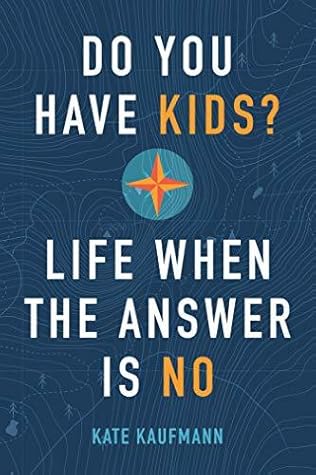
Do You Have Kids? Life When the Answer is No by Kate Kaufmann
As someone who has chosen to be childfree, I was really excited to read this one. Unfortunately, it was kind of a let down and the end was pretty depressing. As the author points out there are usually two types of women without children - those who chose not to have children and those who can't have children, but may have wanted them. The author falls into the second camp and I think that fact makes the focus of the book lean more in that direction. She spends a lot of time talking about step-parenting, step-grandparenting, finding other children to invest in, etc. I never wanted kids and I don't want to be a teacher or caregiver for children either. I don't feel like I have to invest in children in some way to be valuable. I do like that she gets into more day-to-day issues like housing options for single or childfree people as they age, dealing with end of life issues and wills, how having children or not can affect your health, what will your legacy be, etc. The chapter on religion and not having children was interesting, but also disappointing to me. I felt like she kind of glossed over how hard it can be to be childfree in a religious community - or maybe that's just been my issue. It was an interesting book, but I felt like it leaned more toward people who really wanted kids and couldn't have them and learned to deal with being childless. I also agreed with another reviewer who said the ending of the book left her feeling depressed - maybe because the last two chapters dealt with end of life planning and leaving your legacy. But, I guess reading this book kind of reiterated how I already feel - I do NOT regret not having children, but it's been very isolating for me. I know very few childfree couples, especially in any churches I've attended, and I've found it very, very hard to maintain friendships once the friend has children. The author really didn't give me a lot of hope of that changing. It is an interesting book, but I wouldn't really recommend it.
Some quotes I liked:
"Abma and Martinez's study was cited to in an article titled, 'Childless and Godless,' published in The Family in America: A Journal of Public Policy. Authors Bryce J. Christiansen and Robert W. Patterson summed up the study's finding by saying, 'This study highlights - among other things - the sterilizing consequences of irreligion.' It's ridiculous to suggest that those without children would have procreated if only they'd remained regular churchgoers...some of us have found the church less than welcoming." (p. 151-52)
"The Pope made a distinction between the childless and the childfree. He suggested that couples who are unsuccessful having children 'look to Jesus and draw on the fertility that Christ has with His Church.' However, he didn't mince words when it came to the childfree. 'These couples who do not want children, in which the spouses want to remain without fertility...in the end this marriage comes to old age in solitude, with the bitterness of loneliness. It is not fruitful, it does not do what Jesus does with His Church: He makes His Church fruitful.'" (p. 156) [Yes, I LOVE taking advice on whether or not to have children from the Pope who also does not have children who repeatedly cites Jesus, who also did NOT have children...]
"In fact, researcher Leslie Ashbury-Nardo found that those who go against cultural stereotypes by intentionally choosing not to have kids can be met with what researchers refer to as 'moral outrage.'" (p. 237) [People don't like it when other people live outside the box they choose to live in.]
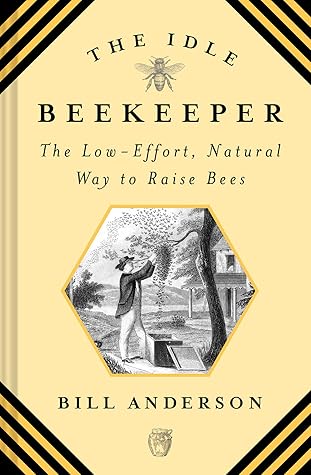
The Idle Beekeeper: the low-effort, natural way to raise bees by Bill Anderson
I picked this book up based on the title. My husband and I took a beekeeping class and have tried to keep bees for two years, but never had a hive successfully overwinter. It was just too expensive to keep buying packages of bees that just died, so we're taking a break. Before this book I was not familiar with the Warré method of keeping bees, but it was very interesting. The Warré hives are built to mimic the size and type of hollow tree wild bees prefer to make their home. The boxes are rotated so that when you harvest honey in the fall you take the top box and in the spring you add an empty box to the bottom. While some aspects of harvesting the honey from the Warré boxes seems complicated, I do like that in theory when you add a box the other boxes will be lighter as the bees consume their honey stores over the winter. With Langstroth hive boxes I can't physically lift them when they are full of bees and honey, but the Warré boxes are smaller, so it might be more doable. There was a lot of good information about catching swarms and not checking on the bees constantly. The bees know what they're doing and we're just trying to provide a suitable home for them and harvest some of their honey as well. This book definitely gives me more ideas about better ways to keep bees when we try again in the future. Anderson also gives full color pictures in the Appendixes if you want to build your own Warré hives.
Some quotes I liked:
"Maverick mycologist Paul Stamets also keeps bees. He noticed that a raised bed of woodchips in which he was growing King Stropharia mushrooms was being visited by his bees - with extraordinary determination they had lifted relatively enormous chips of wood to expose the intricate strands of his mushrooms' mycelium growing below the surface. When he looked he could see that the bees were sucking on little extracellular droplets that the mycelium had exuded like beads of sweat...these droplets contain acids, enzymes, and all sorts of messaging molecules: the mycelium is self-organizing and self-educating - as it grows and penetrates its environment, the tips of the mycelium explore anything new or unfamiliar, and then intelligently change themselves to find solutions to fight new toxins, or build new enzymes to digest new food...But Stamets discovered that the mycelial droplets his bees were so keen on were specifically and spectacularly antiviral too. They upregulated the bees' immune systems." (p. 125-27)
